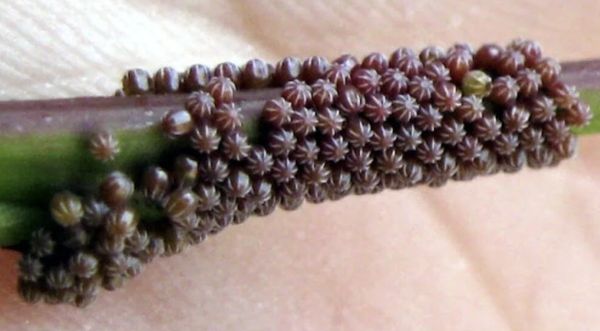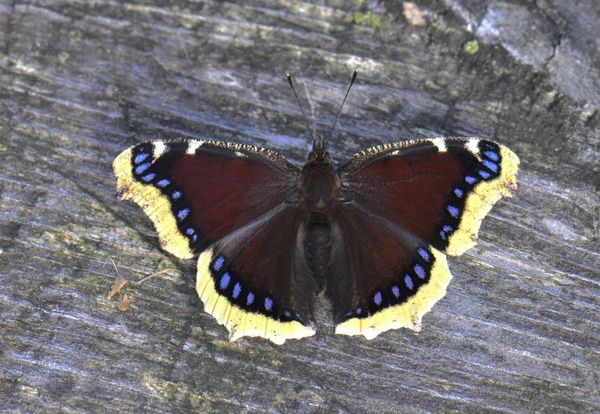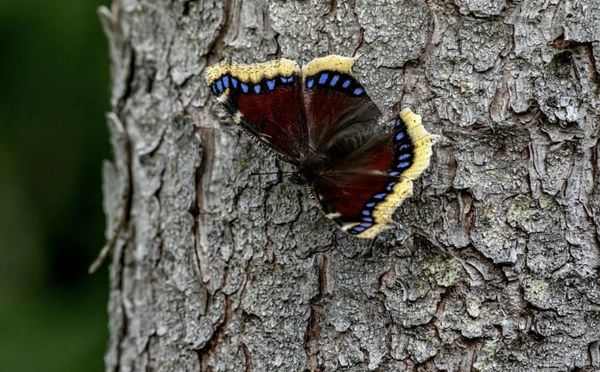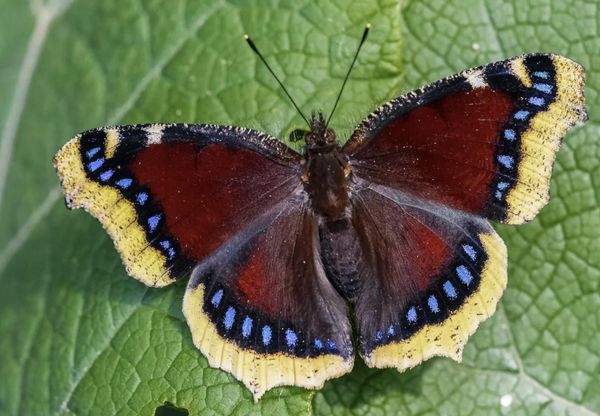Gardening is my passion. There’s something incredibly rewarding about nurturing plants and seeing the fruits of your labor. But let’s face it, gardening can have its challenges, and one of the biggest headaches is dealing with pests. Sometimes, it’s difficult to distinguish between friends and foes in the garden.

Recently, I stumbled upon a photo on social media that perfectly captured this confusion. At first glance, the leaf in the photo seemed to be adorned with intricate black patterns, almost like an alien design or a bizarre disease. I was just as puzzled as everyone else.
After some investigation, I discovered that those mesmerizing patterns were actually the eggs of the Nymphalis Antiopa butterfly, also known as the Mourning Cloak butterfly. This unique butterfly species has a remarkable life cycle and some fascinating habits.

The eggs, which appear like delicate black lace, are laid in clusters and create a stunning geometric marvel on the leaves. Initially, I wasn’t sure whether this discovery would be beneficial or disastrous for my garden.
Fortunately, the Nymphalis Antiopa butterfly is actually beneficial for your garden. The larvae, commonly known as caterpillars, mainly feed on leaves of trees and shrubs such as willows, elms, and poplars. So, if you have a garden full of flowers and veggies, you’re probably safe. In fact, these butterflies contribute to decomposition by feeding on rotting fruit.

Observing the life stages of these butterflies is truly captivating. Once the caterpillars hatch from the intricate eggs, they have black bodies with tiny white spots and bristly structures. They go through multiple stages, shedding their skin and growing larger during each instar phase.
Upon reaching maturity, the caterpillars find a safe place to pupate. They create a chrysalis, resembling a cozy sleeping bag, where they undergo their transformation.

The duration of this stage depends on the climate and time of year, ranging from a couple of weeks to several months. Finally, the stunning Mourning Cloak butterflies emerge from the chrysalis, showcasing dark velvet wings bordered with a vibrant yellow edge and adorned with beautiful blue spots.
The behavior of Mourning Cloak butterflies is quite intriguing. Unlike many other species, they hibernate during winter. They seek out cozy spots under loose bark, piles of wood, or even old sheds.

When spring arrives, they are among the first butterflies to grace our gardens, often before the flowers start to bloom. The combination of their somber, dark wings against the stark spring landscape gives them their name — Mourning Cloaks, resembling mourning garments.
As gardeners, we often focus solely on insects’ immediate impact on our plants. When we spot caterpillars, our immediate concern is, “Oh no, they’re going to eat everything!” However, it’s important to take a step back and consider the bigger picture. The Nymphalis Antiopa butterfly teaches us a valuable lesson about nature’s delicate balance. While the caterpillars may consume some leaves, they won’t destroy your garden. In fact, by fostering a habitat for these butterflies, you’re actually contributing to a healthier ecosystem.
So, what should you do if you discover these eggs or caterpillars in your garden? My advice is simple — let them be. Take the time to enjoy this incredible process and witness their transformation. If you’re worried about your plants, you can gently move the caterpillars to a nearby tree or shrub where they’ll be happier and less likely to nibble on your prized flowers.
Gardening is all about finding balance. It’s about creating harmony between the plants you love and the creatures that share your garden. The next time you stumble upon something unusual, resist the urge to reach for insecticides and take a moment to investigate. You might just uncover something truly amazing, just like I did when I discovered the Nymphalis Antiopa butterfly eggs. So embrace the adventure of gardening — each season brings new surprises and challenges, making it all the more rewarding.





